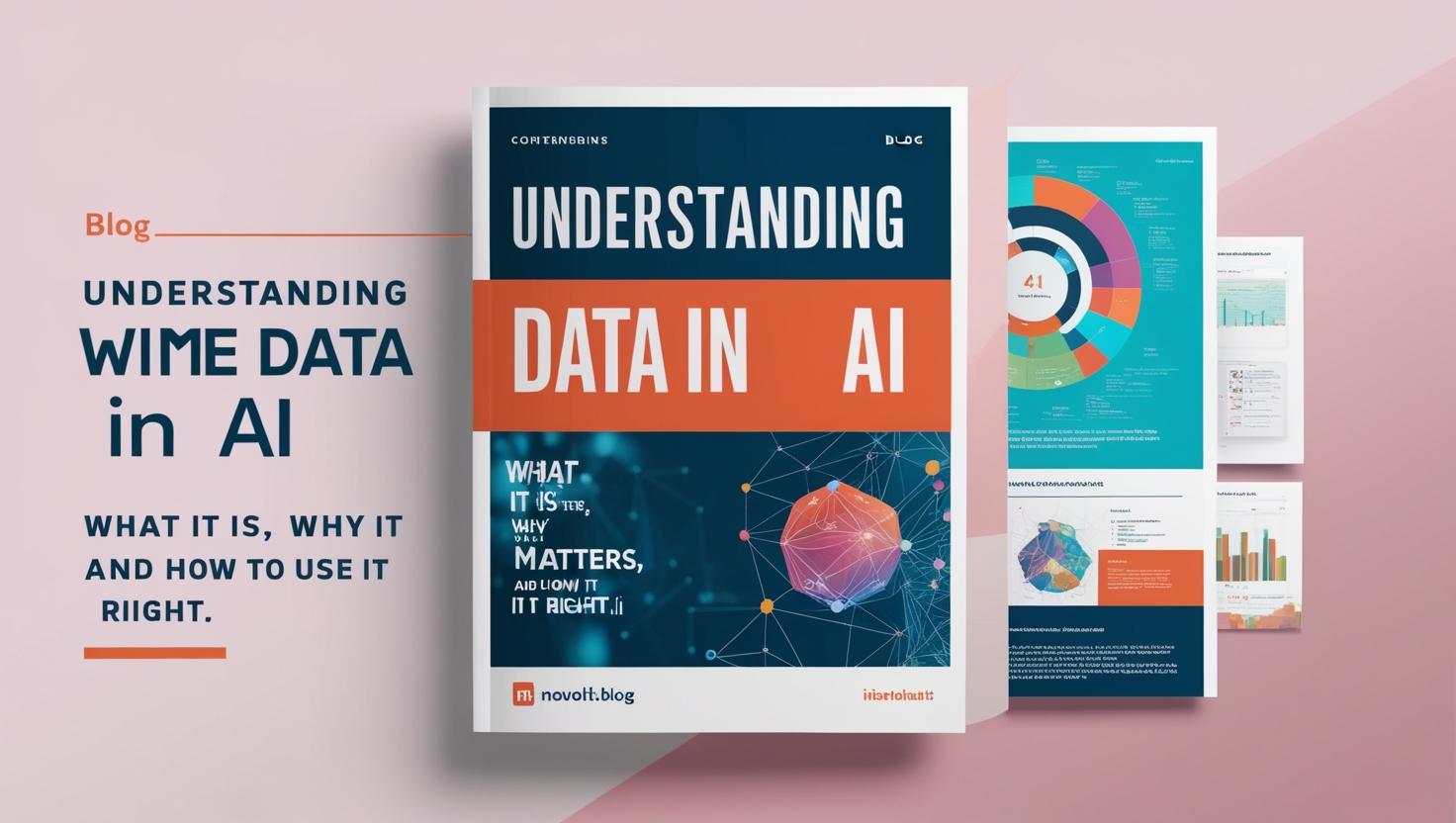Explore what data really means in the context of AI, how it's used to train models, where to get it from, and common mistakes to avoid.
You may have heard the phrase, “data is the new oil,” especially when talking about AI. But what is data really, and how do you use it to build AI systems? In this blog, we’ll explore what data means in the context of AI and machine learning, how to collect it, and how to avoid some common pitfalls. Let’s dive in—with examples you can actually picture.
What is Data?
In AI, data refers to the information we collect to help a machine learn how to make predictions or decisions.
At its core, data is usually represented in tables—like spreadsheets—where each row is an example, and each column is a feature (or label).
Example 1: Predicting House Prices
Imagine you work for a real estate agency and want to predict the price of a house based on its characteristics.
| Size (sq ft) | Bedrooms | Price ($) |
|---|---|---|
| 1,200 | 2 | 300,000 |
| 1,800 | 3 | 450,000 |
| 2,500 | 4 | 650,000 |
- Input A (Features): Size and Bedrooms
- Output B (Label): Price
- The goal is to train a model to learn a mapping from A to B.
👉 Alternate use: If you’re a buyer and want to know how much space you can afford, you could flip the inputs/outputs:
- Input A: Price
- Output B: Size
Example 2: Recognizing Cats in Images
Say you’re building a fun app that tags photos of cats.
| Image | Is Cat? |
|---|---|
| 🐱 img1.jpg | Yes |
| 🐶 img2.jpg | No |
| 🐱 img3.jpg | Yes |
- Input A: Image files
- Output B: Labels (“Yes” or “No” for cat)
This is a classification task, where the goal is to tell whether an image contains a cat.
How Do You Get Data?
There are 3 main ways to acquire data:
1. Manual Labeling
Manually assign labels to data. Example: Labeling thousands of images as cats or not cats.
| Image | Label |
|---|---|
| img101.jpg | Cat |
| img102.jpg | Not Cat |
✅ Good for high-quality, small-to-medium datasets
❌ Time-consuming and labor-intensive
2. Behavioral Observation
Collect data from how users or systems behave.
Example: E-commerce site
| User ID | Visit Time | Price Offered | Purchased? |
|---|---|---|---|
| 123 | 10:01 AM | $99 | Yes |
| 456 | 10:05 AM | $149 | No |
Here, you don’t need to manually label data—user actions create it for you.
Example: Factory Machine Monitoring
| Machine ID | Temperature (°C) | Pressure (PSI) | Failed? |
|---|---|---|---|
| M001 | 80 | 30 | No |
| M002 | 120 | 45 | Yes |
This kind of data can help build predictive maintenance systems to detect failures before they happen.
3. Download or Partner-Sourced Data
You can get data sets from:
- Public datasets (e.g., ImageNet, Kaggle, UCI ML repo)
- Partnerships with companies (e.g., hospitals sharing medical imaging data)
📌 Remember: Check licensing and permissions when using third-party data.
Misconceptions About Data
❌ Misconception 1: “Let’s collect data for 3 years, then do AI.”
Instead, start small and early. Involve the AI team early so they can give feedback on what data is actually useful.
❌ Misconception 2: “We have lots of data—it must be valuable.”
Not all data is useful. Just having gigabytes of data doesn’t guarantee AI success. The quality and relevance of data matter more.
Data Can Be Messy (and That’s Okay)
Common data issues:
| Problem | Example |
|---|---|
| Incorrect values | A house priced at $1 |
| Missing values | Bedrooms or price column has blank entries |
| Inconsistent units | Size listed in both sq ft and sq m |
AI teams need to clean and preprocess this data before training models.
Structured vs Unstructured Data
| Type | Example | Common Use Case |
|---|---|---|
| Structured | Tables, spreadsheets | House pricing, sales prediction |
| Unstructured | Images, text, audio | Cat detection, speech recognition |
Most generative AI today focuses on unstructured data (like text or images), while supervised learning works well with both types.
Final Thoughts
- Data is foundational to building AI.
- You must define what’s input (A) and what’s output (B) based on your business goal.
- Avoid overinvesting in data before validating it with your AI team.
- And remember: messy data is normal—but with the right team, it can still become powerful.

